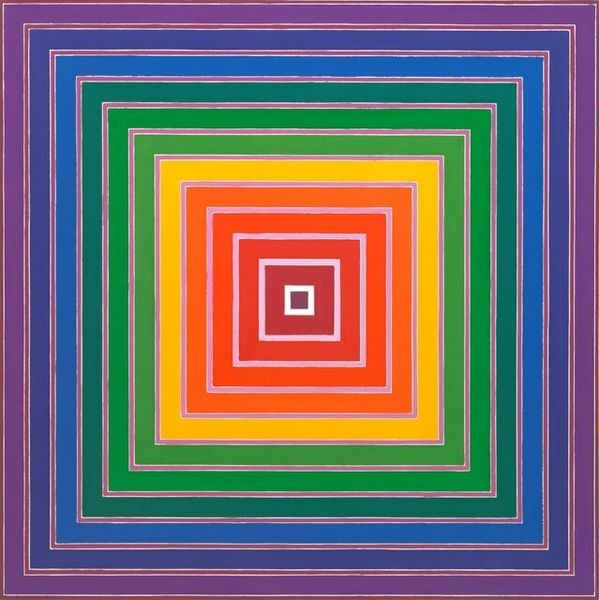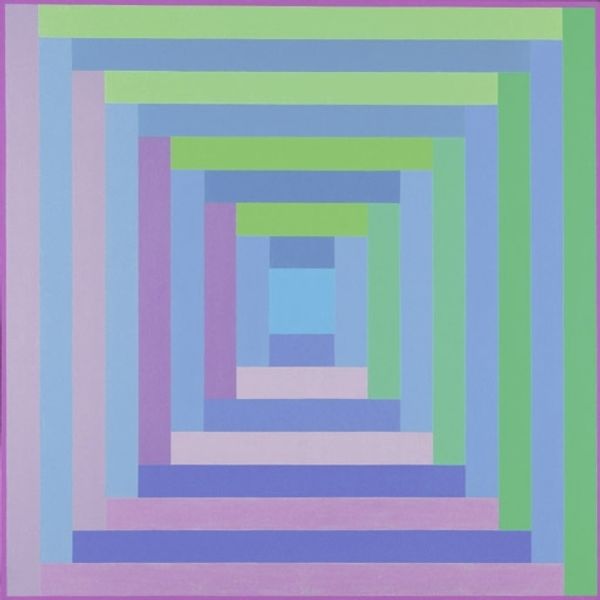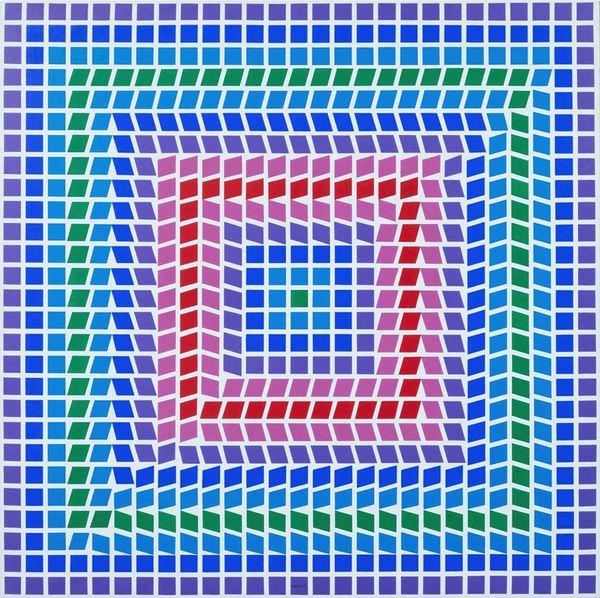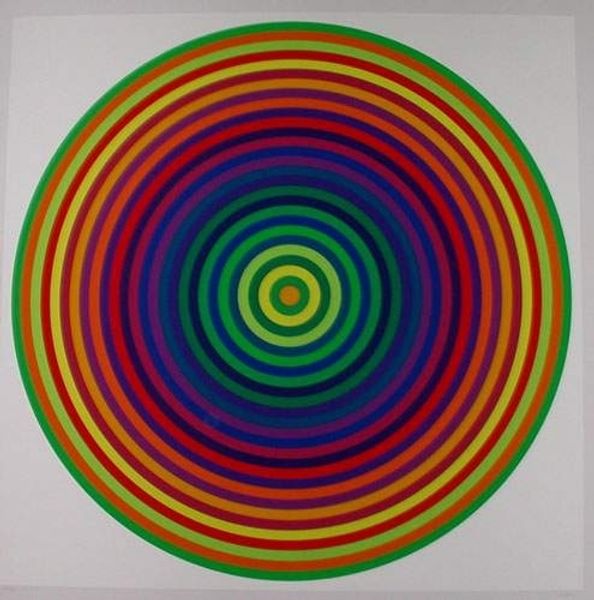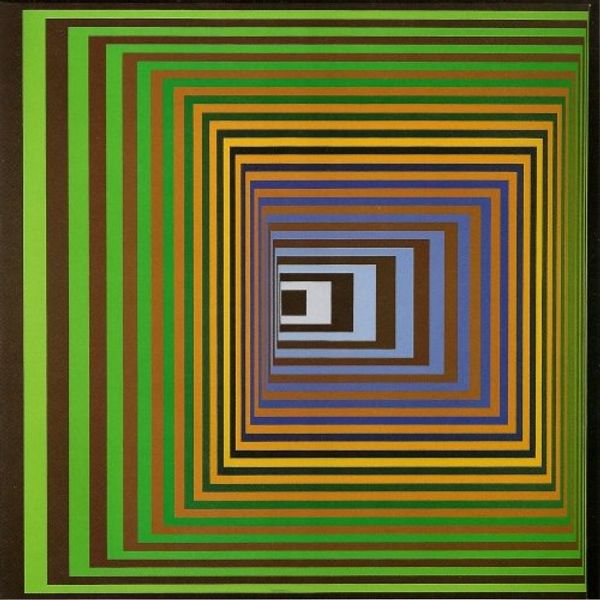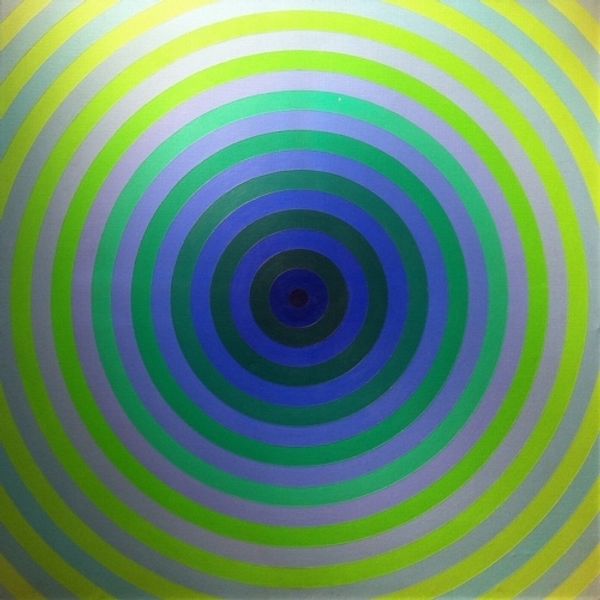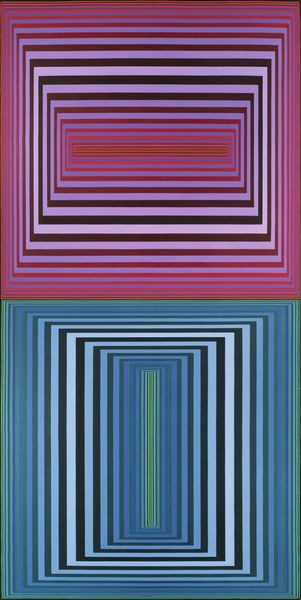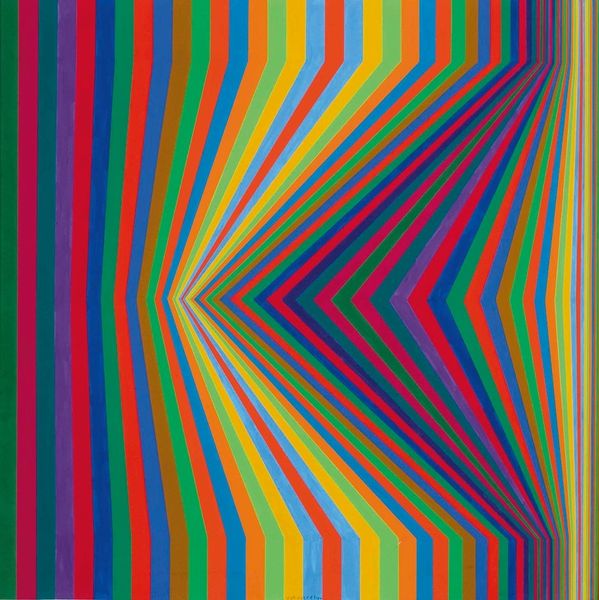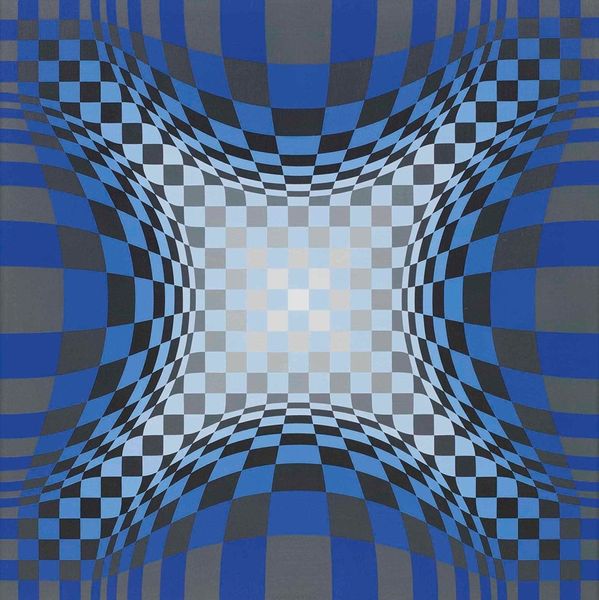
acrylic-paint
#
op-art
#
colour-field-painting
#
acrylic-paint
#
abstract
#
geometric pattern
#
abstract pattern
#
repetitive shape and pattern
#
organic pattern
#
geometric
#
repetition of pattern
#
vertical pattern
#
abstraction
#
pattern repetition
#
layered pattern
#
combined pattern
#
modernism
#
repetitive pattern
Copyright: Modern Artists: Artvee
Curator: Before us, we have "Gamma-Mc," an acrylic on canvas creation by Victor Vasarely, dating back to 1968. Editor: Whoa, it feels like I’m staring into a really vibrant, hypnotic well. All those colorful squares just sucking me in! Gives me a bit of a dizzy feeling, actually. Curator: The piece is emblematic of the Op Art movement, exploring the optical illusion as a means to challenge perception and question the stability of visual experience. Its reliance on geometric abstraction is crucial in the discourse around how modernist art could offer visual encounters capable of critiquing representational tradition and cultural norms. Editor: That’s a mouthful! But I get what you’re saying. It’s like the painting is daring you to trust your eyes. Like, "Are these squares moving? Are they different sizes?" It messes with your brain, but in a cool way, you know? And those drips along the sides...were they intentional? Curator: I find the drips very interesting, and they could symbolize the subversion of absolute order that many sought to represent after WWII. Considering its creation amidst socio-political upheavals, this could act as commentary. Editor: I see… So the perfect geometry isn’t really perfect? It’s got flaws on purpose. That feels very human. But those colours... why those ones? It seems so deliberate, the way he has put them together. Curator: Color theory is crucial here; Vasarely was concerned with the impact of each carefully chosen hue and its impact on the eye. By engaging the beholder with complex perceptual illusions, artists of the time prompted critical discourse. How does one ascertain what is truth or fabrication if the very act of observing shifts? Editor: Makes you think about how easily we can be manipulated, right? Through art, through media... Everything! Okay, I'm getting too deep now, it is really just a cool optical illusion that keeps your attention by offering an abstract sense of space! I’ve looked at it again, and now the layers are projecting. Curator: The genius of Vasarely indeed lies in his capacity to distill complex visual concepts into forms easily relatable but with profound intellectual depth. He provokes important discussions around art, spectatorship, truth and modernity. Editor: True, and next time I see an illusion, maybe I won't be so quick to believe it.
Comments
No comments
Be the first to comment and join the conversation on the ultimate creative platform.

